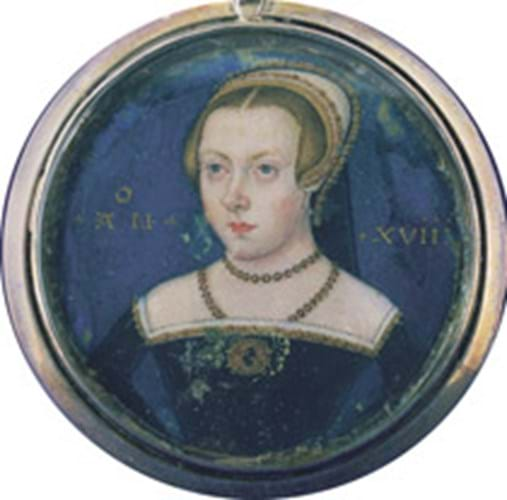
It is on show until March 18 in the major exhibition Lost Faces, hosted by Philip Mould at his Dover Street, London Gallery and guest-curated by Dr Starkey.
Lady Jane reigned as Queen of England for just nine days in July 1553 before being executed at 15 years old, making her England's youngest and shortest-lived Queen.
Numerous pictures have surfaced that claim to depict her, but they have all been either dismissed or shown to be painted posthumously. The tiny and striking 2in (5cm) diameter newly surfaced miniature, shown here, has been in the collection of the Yale Centre for British Art at Yale University, USA, for many years, but last year Dr Starkey saw it illustrated in a book described as an unknown woman and was struck instantly. "I thought that it had to be of Lady Jane," he said.
He noted the evident youth of the sitter and the fact that it would have been highly unusual at this time for a miniature to be painted for anyone but royalty or those of very high status. He was particularly drawn to the sitter's brooch and the spray of jewellery foliage behind it - including acorns and gillie flowers - prompting him to check the inventory of the jewellery that Lady Jane owned when she first entered the Tower as a monarch in 1553. Sure enough, a gold brooch with an agate centre that exactly matched the one in the miniature was listed, and the spray of foliage proved to be the badge of the Dudley family.
In May 1553 Lady Jane was married to Guildford Dudley, son of John Dudley, Duke of Northumberland, a match that proved fatal and led to the execution of all three parties. "Either it is a wedding picture or, more likely, it dates from the time that Lady Jane was in the Tower of London," said Dr Starkey. It is thought to be the work of the 16th century female miniature painter Lavinia Teerlinc.
The exhibition at Philip Mould's gallery brings together numerous recently discovered Tudor royal portraits for the first time, including one of Prince Arthur, whose early death paved the way for Henry VIII's succession to the throne. "We are thrilled to offer a platform to a highly significant advance in Tudor iconography," said Mr Mould.
Further information on www.historicportraits.com.
Stephanie Harris




